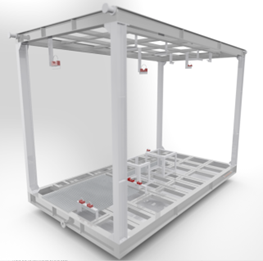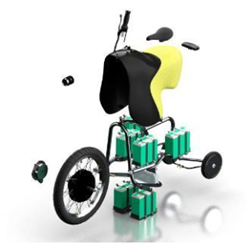What Is Concept Design in Product Development?
It’s hard to get a straight answer when you Google, what is concept design? Search results come from architects, graphic artists, decorators, web masters, and every other creative type on the internet. That’s why I want to take a few paragraphs to talk about what we mean when we talk about concept design in product development.
In 2007, the Danish agency FORA said there is “no collective perception” of concept design. So FORA took on the job of defining the phrase in its 221 page publication (pdf) Concept Design–How to Solve the Complex Challenges of Our Time. I’ll save you about 220 of those pages: “Concept design is the solution to a problem that has not yet been solved or which so far has been solved unsatisfactorily.”
It’s a thoughtful explanation, but it’s also broad. In fact, you could argue there’s little difference between the expression “concept design” and simply “design.”
We take a narrower view. When we talk about concept design, we refer to a phase of the design process, within the product development process. Recognizing that phases overlap, we specifically mean that after you’ve determined product requirements, but before you start detailed design, you’re in the thick of concept design. Here’s a quick visual:
IDEA–>REQUIREMENTS–>DESIGN concept–>DESIGN detailed–>PROTOTYPE–>MANUFACTURING

Concept design for industrial equipment
Concept design is the initial big picture or macro design. It shows us what problems the product will solve, how it will solve them, and what it will feel like as it is solving them. Arguably the most creative stage of product development, concept design is stickies slapped on whiteboards, ink and wash, napkins and crayons even. It calls on us to consider sweeping ideas and all the various possibilities. The more the better. In concept design lies the very soul of innovation.
Detailed design, for many product developers, signals the introduction of CAD tools. It’s the cold hard truth phase where we build mathematically correct virtual models. In detailed design, we worry about manufacturability, clearances, and how long you can use the product before it starts a fire.
One more thing: Notice I didn’t say concept design is limited to sports cars and shiny laptops. Potato harvesters, water treatment devices, industrial packaging lines, hospital equipment–any product worth developing–goes through some form of concept design. Or should.

Concept design for an electric vehicle
In all of our articles about Creo and concept design, we argue that a role exists for CAD before detailed design–in concept design. Furthermore, we’re working to show it can enhance concept design. But that’s for future posts.
Explore concept design solutions
Find out how PTC’s concept design suite can help you. See how you can easily share data with colleagues and partners, eliminate the need to recreate drawings and models, and maintain design integrity throughout the product development process.
[Ed. This post has been updated from the original with new information.]